-
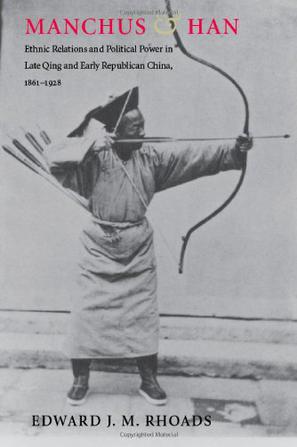
Manchus and Han
China's 1911-12 Revolution, which overthrew a 2000-year succession of dynasties, is thought of primarily as a change in governmental style, from imperial to republican, traditional to modern. But given that the dynasty that was overthrown—the Qing—was that of a minority ethnic group that had ruled China's Han majority for nearly three centuries, and that the revolutionaries were overwhelmingly Han, to what extent was the revolution not only anti-monarchical, but also anti-Manchu? Edward Rhoads explores this provocative and complicated question in Manchus and Han, analyzing the evolution of the Manchus from a hereditary military caste (the "banner people") to a distinct ethnic group and then detailing the interplay and dialogue between the Manchu court and Han reformers that culminated in the dramatic changes of the early 20th century. Until now, many scholars have assumed that the Manchus had been assimilated into Han culture long before the 1911 Revolution and were no longer separate and distinguishable. But Rhoads demonstrates that in many ways Manchus remained an alien, privileged, and distinct group. Manchus and Han is a pathbreaking study that will forever change the way historians of China view the events leading to the fall of the Qing dynasty. Likewise, it will clarify for ethnologists the unique origin of the Manchus as an occupational caste and their shifting relationship with the Han, from border people to rulers to ruled. -
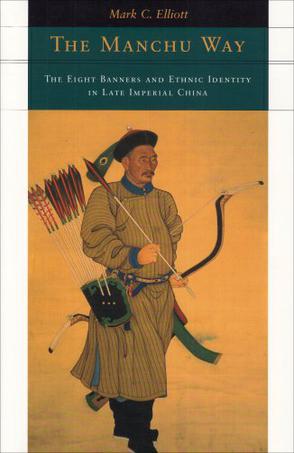
The Manchu Way
In 1644, the Manchus, a relatively unknown people inhabiting China’s rude northeastern frontier, overthrew the Ming, Asia’s mightiest rulers, and established the Qing dynasty, which endured to 1912. From this event arises one of Chinese history’s great conundrums: How did a barely literate alien people manage to remain in power for nearly 300 years over a highly cultured population that was vastly superior in number? This problem has fascinated scholars for almost a century, but until now no one has approached the question from the Manchu point of view. This book, the first in any language to be based mainly on Manchu documents, supplies a radically new perspective on the formative period of the modern Chinese nation. Drawing on recent critical notions of ethnicity, the author explores the evolution of the “Eight Banners,” a unique Manchu system of social and military organization that was instrumental in the conquest of the Ming. The author argues that as rulers of China the Manchu conquerors had to behave like Confucian monarchs, but that as a non-Han minority they faced other, more complex considerations as well. Their power derived not only from the acceptance of orthodox Chinese notions of legitimacy, but also, the author suggests, from Manchu “ethnic sovereignty,” which depended on the sustained coherence of the conquerors. When, in the early 1700s, this coherence was threatened by rapid acculturation and the prospective loss of Manchu distinctiveness, the Qing court, always insecure, desperately urged its minions to uphold the traditions of an idealized “Manchu Way.” However, the author shows that it was not this appeal but rather the articulation of a broader identity grounded in the realities of Eight Banner life that succeeded in preserving Manchu ethnicity, and the Qing dynasty along with it, into the twentieth century. -
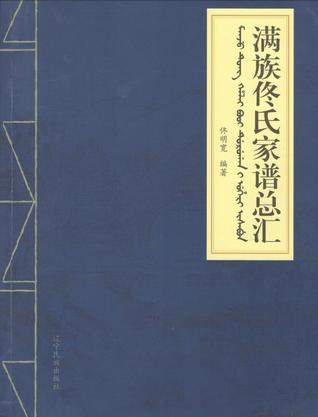
满族佟氏家谱总汇
编纂家谱是中华民族文化特有的优良传统,是中华民族文化遗产的一部分,为多学科研究提供了丰富的宝贵资料。满族家谱是各民族众多家谱中现存数量最多的一类。 本书收集了满族佟氏族谱、满洲佟氏宗谱、重新修订的满族佟氏世系支谱及不知满族姓氏的佟氏世系宗谱,内容完整丰富,是作者调研20年所得,反应了满族宗族文化。 -
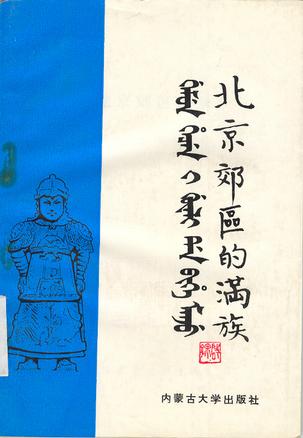
北京郊区的满族
内蒙古大学出版社1989年12月出版。12万字。原连载于《满族研究》杂志。 此书有作者自序、正文、结束语、附录。作者在序中提到,他不仅要写出满族的思想和性格,还要写出数十年来观察到的满族与其他民族的相互影响。 此书重点描述了京西外三营和旧时京兆所属各县园寝情况,时间重点放在二三十年代,但有时上溯到清代中叶,下限到解放前夕。 正文分三部分。第一部分为营房中的满族。主要内容为营房中满族的性格和思想,重内亲、档子房、练武、饮食、营房中的发式、头饰和服装,营房中的房屋、语言、宗教信仰,营房内外的民族关系,营房中妇女的社会地位,营房中的读书和说书,营房满族破败的过程等,这一部分内容就成了北京郊区满族的主体部分。作者讲述的小故事,由于是亲身经历过的故事,所以有声有色,在叙述的时候又旁征博引,使他讲述的故事与要说明的道理浑然一体,读起来很有味道。如“重内亲”中,作者讲他在八九岁时到营房走亲戚,在外祖父家里首先来看他们的是外祖母这边的亲戚,随后才是外祖父这边的亲戚。而且外祖母这边的亲戚特别热情,主动请吃饭,主动讲那些营房里的故事,他所看到和接触的也都是姨姥姥、姨及其儿女们,姑舅这边反而很少。 “营房中的语言”一节,作者列出了外三营语汇一览表,这是作者搜集选择后列出的。作者认为外三营受外界干扰少,所以保存的满语成份也就多,而且外三营所使用的语言,有一部分是乾隆年间使用的,这些用法在乾隆年成书的《红楼梦》中还能见到,作者的这些看法可以给语言研究者以很多启示。 另外,“营房内外的民族关系”中所写内容也相当丰富,在民族间的通婚方面(指八旗内部)已很普遍。作者介绍了他外祖家四代人的婚姻情况,在他们当中有蒙古血统,又有满洲和汉人(汉军)血统,营房中的“民族关系”是极融洽的。“营房里妇女的社会地位”写得也很深刻有趣。营房里的妇女在20年代以前地位比较高,她们刚强而又有自主性,她们甚至喜欢着男装,而且还“拜把子”,称呼也成了大爷、二爷……作者的母亲就与人拜过把子,这种风气,如果作者不说,现在已经很少有人知道了。 “悲剧的一瞥”和“破败过程”写出了营房满族悲惨生活的境况及原因,这段历史的细节也是鲜为人知的。民国初年,旗人开始败落,作者以亲身经历写了他自己家与外三营满人的遭遇。作者描写他上初中时去外三营拜年,到了那里看到的却是一番凄凉景象,营房变成了村子,家家都有外出谋事当兵的,有的进了监狱、有的拉车、做小买卖,饭不果腹,衣不暖身,能卖的都卖了,营房满族悲惨到了极点。作者的这段记述,为今天了解满族当时的境遇,提供了一份生动具体的档案。 第二部分写“散居的满族”。主要写了散居满族的思想、感情,与周围住户的关系,居满族的生计和他们的手工艺,散居满族的悲哀。 第三部分写“园寝附近的满族”。在这部分里,作者写了最不为人所注意的守园寝的那部分满人。这部分人原是内务府包衣佐领的汉军,他们已经很早就满洲化了。作者介绍了这部分满族的生活、经历、地位,与主人家的关系。作者讲述了许多当年这些满人有意思的生活故事,读起来津津有味。在这部分中还对他们的满洲名字进行了分析,使人们了解到当年他们的思想和爱好。 总之,这部著作,是一部笔法新颖、见解独到、资料丰富、至今已很难见到的书了,它的出版对深入研究满族开辟了新的途径。 -
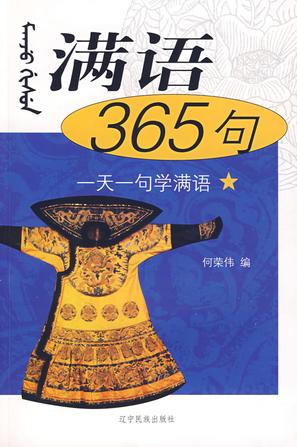
满语365句
《满语365句》讲述了:满族是一个拥有丰富多彩的独特的文化的民族,有自己的历史文化、风俗习惯,还有自己的语言和文字。在清代,满语满文被称为国语国书。满语满文,曾经有着自己的辉煌。在清代,满语是东北各民族之间的通用语言,用满文写成大量的图书和档案文献。满族形成之初就接受了汉文化,逐渐改用汉语汉文。至清末,除一些偏远地区的满族人和一些其他的少数民族外,已经几乎没有人使用满语满文。时至今日,即使是满族同胞,能够说和写的人也非常少。只有在黑龙江省一些地区,尚有极少的一部分满族人还会说满语,他们的年龄几乎都已过古稀,还有一些人已经离开了我们。世界的文化是多样性的,文化伴随着语言和文字流传下来。一种语言的消失,也就意味着一种文化即将消失,这种现象的发生,不论是对于丰富多彩的世界文化,还是对独特的满族文化,都不能不说是一个巨大的损失。 为了满足广大满族同胞和满语满文爱好者学习满语满文的需要,我们编写了这本《满语365句》。这本小册子面向的对象是具有初中以上文化水平的读者,根据日常的生活情景,我们分设十八个类别,每个类别下有若干个句子,通过掌握这些句子,读者可以对满语有一个常识性的了解。当然我们也知道,生活是五彩缤纷的,日常交流和沟通的任务,仅靠这365个句子是远远承载不了的。如果想达到运用自如的程度,还得经过更深层次的学习。